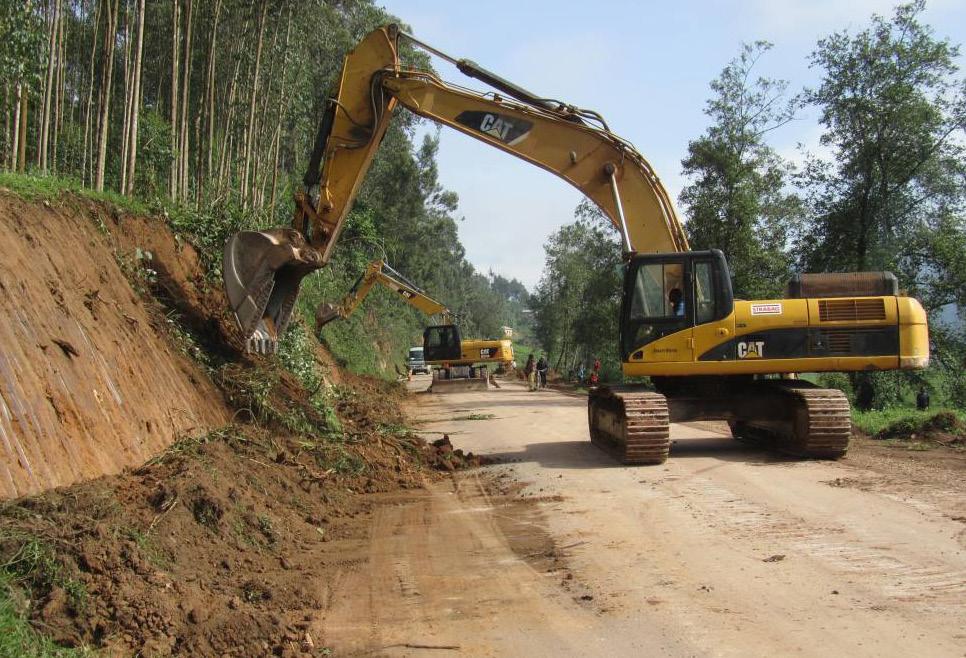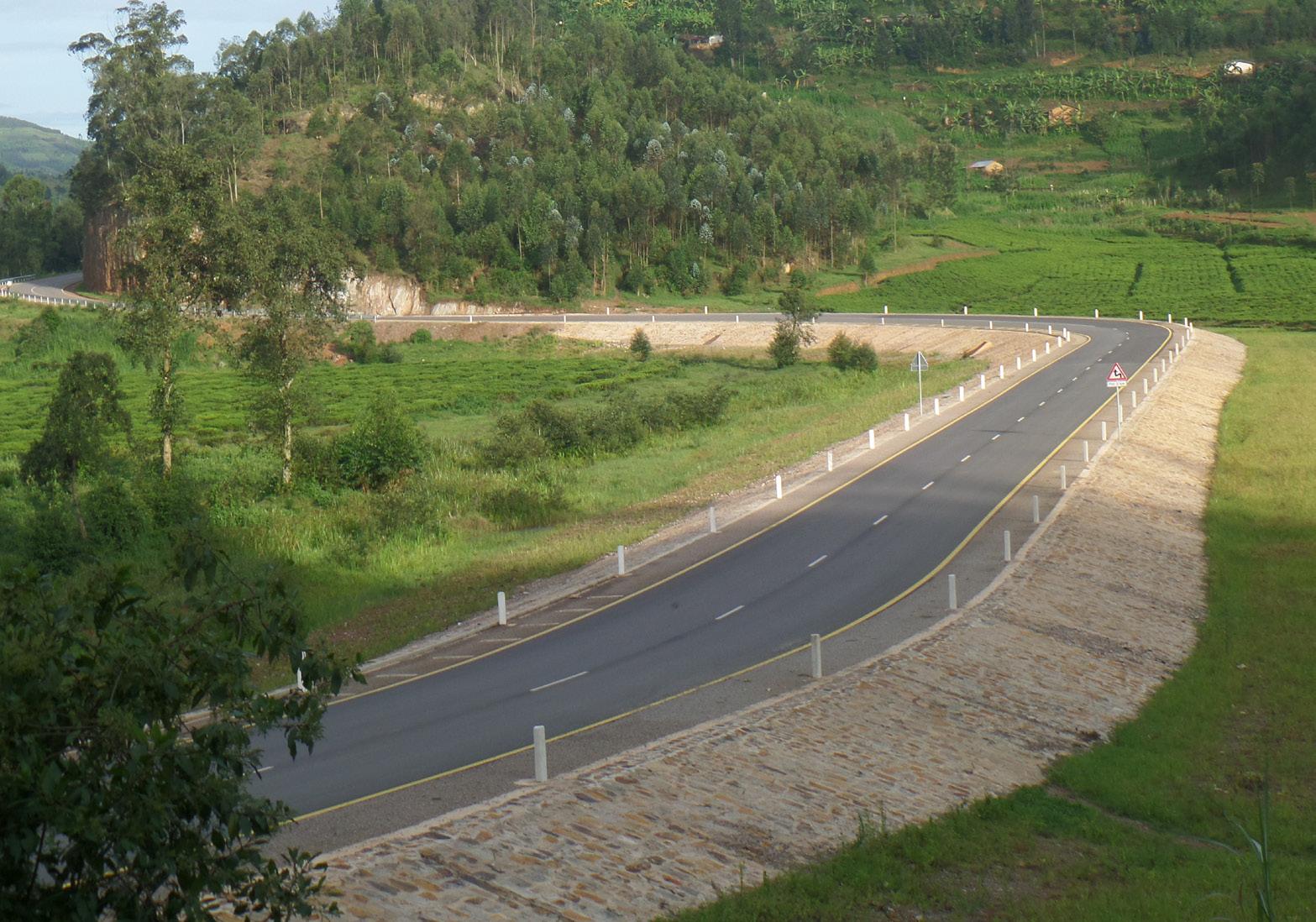
4 minute read
RTDA: For quality and durability of the rural, urban and international transport network
Rwanda Transport Development Agency
Advertisement
RTDA is a Government Institution which is under Ministry of Infrastructure. The government agency operates with well defined objectives including reduction and control of transport costs ensuring the quality and durability of the rural, urban and international transport network; improve safety for goods and passengers on the principle modes of transport, Increase mobility of the population in order to improve access to essential services, education, and employment, Establish a system to ensure sustainable financing of road maintenance, and Facilitate access to cost effective transport services
In order to achieve these objectives, the government of Rwanda decided to set up RTDA specifically to manage and monitor all activities in the transport sector.
RTDA VISION
To gain modern infrastructure, cost effective and quality services, while ensuring sustainable economic growth and developing eco-friendly, safe and seamless integrated multimodal transport system for passenger and goods both at national and regional level.
RTDA MISSION
To contribute towards the realization of the economic development and poverty reduction objectives as formulated in strategic policy guidance, such as Vision 2020 and EDPRS, by the establishment and rational management of transport infrastructure and services
ROAD MAINTENANCE FUND
The Road Maintenance Fund (RMF) is an institution established by the law No.49/2013 of 28/06/2013 and published in the official gazette of the Republic of Rwanda, to ensure collection and funding for the maintenance of road networks in Rwanda.
Ever since its establishment in 1998, the Road Maintenance Fund has achieved significant progress with regards to funding road maintenance, in spite of limited resources currently available. From the time of its creation until now, RMF has recorded significant achievements in terms of road maintenance and bridge rehabilitation. Unfortunately, these achievements are at a modest level in comparison to general maintenance requirements throughout the country.
This modest level is the consequence of insufficient of funds, lack of execution competence of contractors and the slow procurement processes on the side of roads owners (MININFRA,RTDA and MVK). Efforts should be made in order to increase funds through exploiting all resources as prescribed by law, to take into consideration present working load of contractors before awarding another contract, and finally to speed up the procurement processes and to make a good choice ion selection of contractors to be awarded the road maintenance tender.
The Ministry of Infrastructure (MININFRA) is responsible for the overall formulation of policies for the road sector, as well as the implementation of road sector strategies (maître d’ouvrage).
Formally it is responsible for the overall management of the classified road network. In line with government policy of decentralisation, district roads management is being handed over to the Districts. It is in this regard, that the urban roads in Kigali are under the responsibility of Kigali City Council. The management of the rural feeder roads (non-classified) is vested in the Districts.
This implies that two ministries are involved in the management of road sub-sector today, viz. MININFRA and MINALOC, which governs the districts and the City of Kigali.
According to article 3 and article 11 of the law No.49/2013 of 28/06/2013 determining the mission, organization responsibilities of organs of the Road Maintenance Fund (RMF), RMF shall have the main task ofreceiving, managing and the disbursement of funds for the maintenance of public roads as determined by presidential order.
RMF ensures funding of road maintenance on the basis of an annual program of activities prepared by department for roads in MININFRA, the Kigali City Council and the district authorities (maître d’oeuvre) and approved by the Cabinet Meeting.
ROAD INFRASTRUCTURE
The length of the Rwandan road network is estimated to be about 14.000 km. Out of this road Network, 4.698 km length were suggested by a study done in the year 2005, as maintainable and Considered as classified Road Network. The proposed classified Road Network as a result of the 2005 study still
requires the final and official consent by the parliament.
Until the official approval of the above study, the specifications contained in it are regarded as generally binding.
Within classified road network, the MININFRA Transport Sub-Sector Plan (2008-2012) included urban roads of the country. The city of Kigali has a road network of 1.044 km length. This adds up to a total length of road network to be maintained by MININFRA, 5.742,00 km.
The responsible authorities for the maintenance of classified road are:

For National Roads (RN): MININFRA, Policy Planning and Capacity Building Unit (PPCBU).
For District Roads (RD): An individual executive committee of 30 districts, governed by the directorate of infrastructure.
STRATEGIES
• Diversify and strengthen our resource base, with a focus on levy collection and other sources to boost our revenue hence maintain roads to the highest level of standards.
• Develop people and Mechanisms in order to translate our vision and values into actions. • Enhance and strengthen reciprocal and healthy collaboration between Road Maintenance Fund and all stakeholders in the road maintenance sub-sector. • Demonstrate excellence in program management through systems and structures.
GOALS:
• Improvement of Road Maintenance in an efficient and timely manner to
align with vision 2020, which focuses on improvement of Infrastructure and the transport sector in particular. • To strengthen, outsource revenue col- lection as determined by the law, in order to maintain efficiently and ef- fectively the classified Road Network. • Update and strengthen operating sys- tems and procedures that will enable the Fund to meet its vision, mission and plans. • To setup training programs of capac- ity building in order to ensure optimal staff performance. • Enhance collaborations with key part- ners and donors













